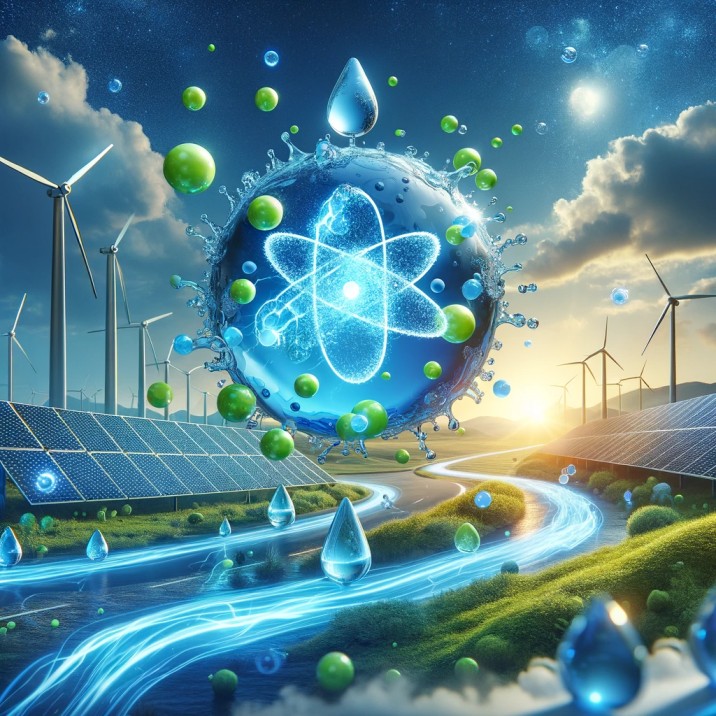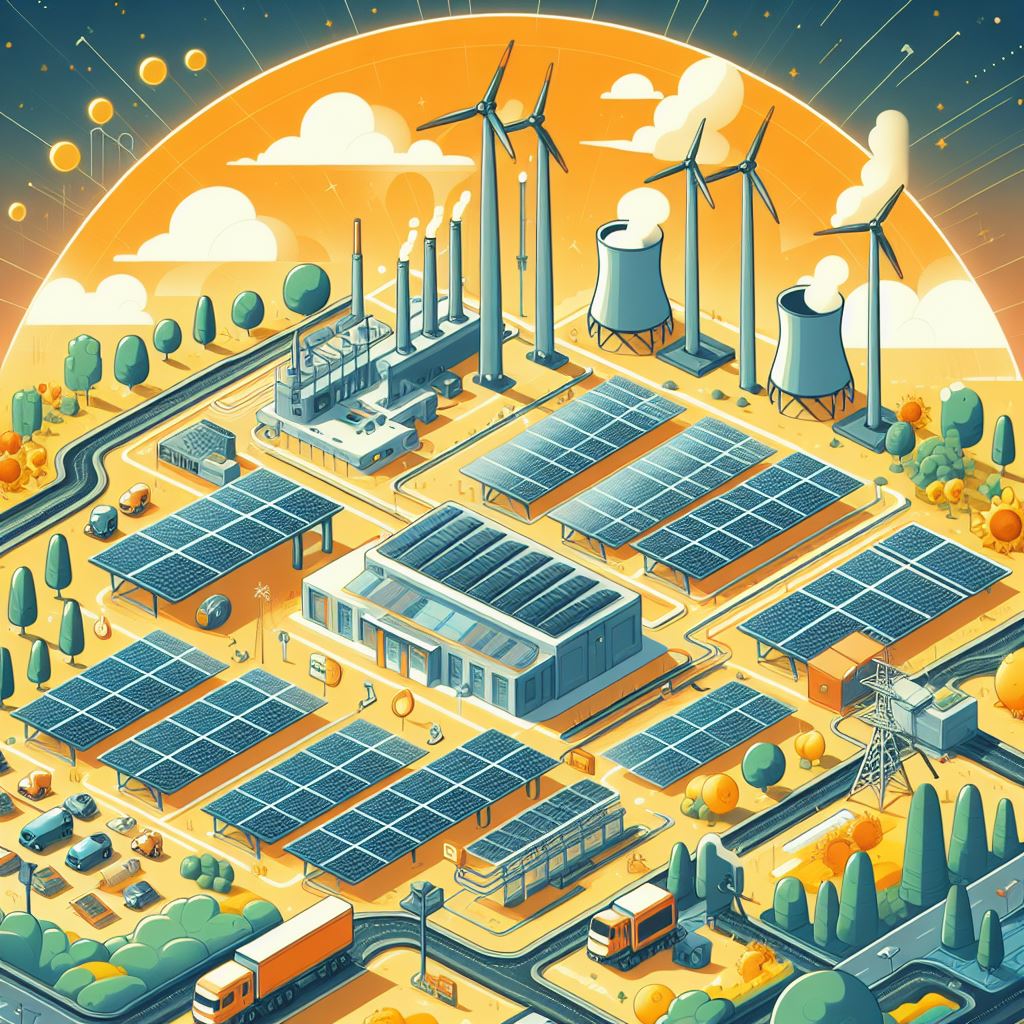Welcome to the vibrant world of green hydrogen energy—our beacon of hope for a sustainable future. As we grapple with the pressing need to curtail our carbon footprint, green hydrogen emerges as a star player in the renewable energy arena. Imagine a fuel so versatile it can power cars, heat homes, and even energize entire industries, all the while emitting nothing but water vapor. This isn’t just an idealistic dream; it’s a practical solution taking shape before our eyes.
In this exploration, we’ll unravel the intricacies of green hydrogen energy. From its environmentally friendly production processes to its dynamic applications, we’ll dive into the nuts and bolts of how it’s transforming our approach to energy. Whether you’re a curious learner, an industry expert, or an eco-conscious citizen, prepare to be enlightened by the promise that green hydrogen energy holds. So, let’s embark on this journey together, breaking down complex technicalities into simple, digestible facts, and discover how green hydrogen is paving the way for a cleaner, greener planet.
Understanding Green Hydrogen Energy
What is Green Hydrogen Energy?
Green hydrogen energy is like a breath of fresh air in our quest for renewable solutions. At its core, it’s hydrogen fuel that’s been produced in an eco-friendly manner—primarily through a process called electrolysis, where electricity derived from renewable sources like wind or solar is used to split water into hydrogen and oxygen. This clean hydrogen can then be used in fuel cells to generate electricity, or as a green feedstock in various industries.
The charm of green hydrogen lies not just in its clean credentials but also in its incredible versatility. It’s not picky about where it comes from or how it’s used. Whether it’s making chemicals, fueling trucks, or storing energy for a rainy day, green hydrogen is ready to do the job without any carbon baggage.
The Environmental Impact of Green Hydrogen
Our planet is giving us a standing ovation for this one. Green hydrogen holds the ticket to significantly reducing greenhouse gas emissions. By leveraging renewable energy sources to produce hydrogen, we’re essentially creating a cycle that’s as natural as it gets. This means we can dream of industries and transportation systems that leave behind nothing but vapors—vapors that won’t haunt our atmosphere with the specter of climate change.
Moreover, green hydrogen could play a pivotal role in sectors that are hard to electrify, such as heavy industry and long-haul transportation. Think of it as a green Swiss Army knife for energy—it’s a tool that can adapt to myriad environmental challenges. With green hydrogen, we’re not just switching to a different energy source; we’re taking a leap towards an ecosystem that respects and preserves our environment for generations to come.
Applications of Green Hydrogen Energy
Fuel Cells – Powering the Future
Picture this: vehicles cruising down the highway, emitting nothing but a trickle of water. That’s the reality with fuel cells using green hydrogen energy. Fuel cells convert hydrogen directly into electricity, water, and heat, with no combustion involved. They’re not just for cars, though. Buses, trains, and even ships are starting to use fuel cell technology to slash emissions and eliminate noise pollution.
But the magic of fuel cells goes beyond transportation. They can power remote locations, serve as reliable backup energy sources, and even support the grid during peak times. They’re like the silent heroes of the energy world, providing clean power wherever it’s needed without any fuss or fumes.
Green Hydrogen in Transportation and Industry
Green hydrogen is not just about what it can do—it’s about what it can transform. Industries that have long been tied to fossil fuels are now seeing a green light with hydrogen. Steel manufacturing, for example, can use hydrogen instead of coal, significantly reducing its carbon footprint. In the world of transportation, hydrogen has the potential to propel everything from short-haul delivery vans to long-distance freight trains and cargo ships.
The versatility of hydrogen is its superpower. It’s not just an energy source; it’s an energy carrier, which means it can be produced in one place and used in another, bringing renewable energy to corners of the globe that need it most. In these applications, green hydrogen is like the universal energy donor—compatible with a myriad of sectors, ready to energize with minimal environmental impact.
Storing and Transporting Green Hydrogen
Innovations in Storage of Hydrogen Gas
Storing energy is a bit like saving for a rainy day—it’s crucial for when you need it most. And when it comes to green hydrogen, the need for efficient storage solutions is paramount. Hydrogen can be stored as a gas or a liquid, or even absorbed into other materials. Each method has its own perks and challenges, but the goal is the same: keeping that precious energy safe and ready for when it’s called to action.
Researchers are tirelessly working to improve the storage of hydrogen, making it more compact, more stable, and more economical. With each breakthrough, we’re inching closer to a future where green hydrogen can be tapped on demand, powering our lives with the flick of a switch.
Developing a Green Hydrogen Infrastructure
Creating a green hydrogen economy is much like building a new highway system. It requires collaboration, investment, and time. Infrastructure for transporting and delivering hydrogen is critical, whether it’s through pipelines, trucks, or ships. The development of a robust hydrogen refueling network is also key to supporting sectors like transportation.
But it’s not just about getting hydrogen from A to B. It’s about ensuring that the entire supply chain, from production to end-use, is efficient, safe, and sustainable. By laying down the foundations of a green hydrogen infrastructure, we’re paving the way for a future where clean energy is always within reach.
Producing Green Hydrogen Energy

Green Hydrogen Production Process
The alchemy of turning water into green hydrogen is as fascinating as it sounds. At the heart of this process lies electrolysis, a technique that’s akin to a science class experiment, but on an industrial scale. Using electricity generated from renewable sources, such as solar or wind power, electrolysis breaks down water into oxygen and hydrogen. The result? A pure, green hydrogen gas, ready to be harnessed.
But it’s not just about making hydrogen; it’s about making it sustainably. Innovations in electrolyzer technology are continually improving efficiency and reducing costs. With each step forward, we’re not only making green hydrogen more accessible but also closing the gap between traditional energy costs and this green marvel.
Economics of Hydrogen Production Plant
While the environmental benefits of green hydrogen are clear, the financial aspect is just as crucial for its adoption. Setting up a hydrogen production plant comes with its own set of costs, from the investment in electrolyzers to the infrastructure for distribution. The good news? As technology advances, these costs are coming down.
Governments and private entities around the globe are recognizing the potential of green hydrogen and are starting to pour investments into it. Subsidies, incentives, and funding for research are becoming more prevalent, easing the financial burden and pushing the hydrogen economy forward. In this economic landscape, the cost of building a hydrogen plant is not just an expense; it’s an investment in a zero-emission future.
Advancing Green Hydrogen Technology
Cutting-edge Green Hydrogen Systems
We’re on the cusp of a green revolution, and green hydrogen systems are leading the charge. From electrolyzers that run on surplus renewable energy to fuel cells that power entire buildings, the advancements are nothing short of groundbreaking. These systems are not only becoming more efficient but also more integrated – fitting into the existing energy landscape like the missing piece of a puzzle.
Moreover, smart systems can now manage the production, storage, and distribution of green hydrogen, optimizing the entire lifecycle. These smart-systems ensure that green hydrogen is not just a fleeting guest in the energy mix but a mainstay of our energy diet.
Green Ammonia: The Next Frontier
A new player is entering the field – green ammonia. As a hydrogen carrier and a fuel in its own right, green ammonia is opening up new avenues for energy storage and transportation. Produced through green hydrogen, it’s a promising solution for shipping clean energy worldwide.
With the rise of green ammonia plants, we’re witnessing the birth of a new link in the renewable energy chain. These plants are more than just factories; they’re hubs of innovation, where the green hydrogen produced is turned into ammonia, ready to be used in agriculture, industry, and energy sectors. It’s a thrilling time as we watch these plants become a reality, signaling a significant leap in our green energy capabilities.
Conclusion
As we’ve journeyed through the world of green hydrogen energy, one thing is abundantly clear: it’s not just an alternative energy source; it’s a cornerstone of the future of sustainability. With its wide range of applications, innovative storage and transport solutions, and the advancements in production technology, green hydrogen stands out as a versatile and clean power solution.
Embracing green hydrogen energy is like setting sail on a vast ocean of possibilities. We stand at the helm with the power to navigate toward a future where our energy is as clean as the air we aspire to breathe. It’s a future worth investing in, exploring, and expanding. So, let’s continue to support the growth of green hydrogen technology—for our planet, economy, and future.















